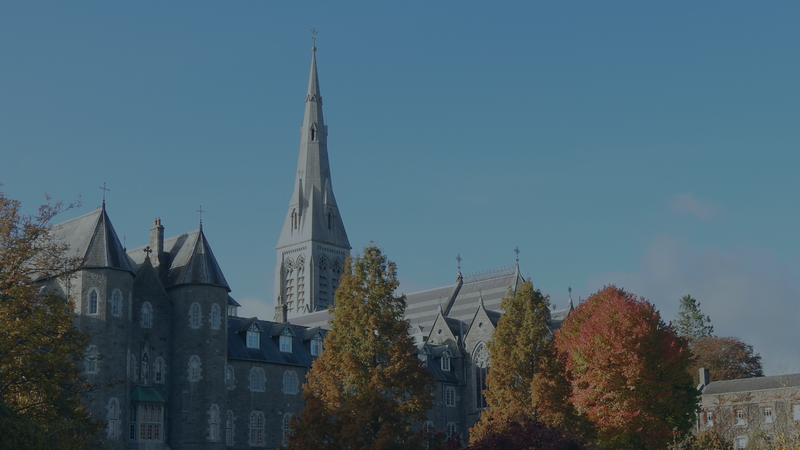Module Level
9/10 MTh / PhD / STL seminar course
Time Allowance
Semester 2. 10 hours. Wednesdays. Beginning 05.02.2020. 18:00-20:00 for 5 weeks.
Assessment
3,500 word assignment (90%) / Bibliographic assignment (10%)
Module Aims
This course examines what it meant to be a Christian in Ireland between 1215, when the Fourth Lateran Council convened in Rome, and 1526, when the cataloguer of the Earl of Kildare’s library at Maynooth recorded two anti-Lutheran works in the collection, an indication of the changes that the looming Reformation would bring. These watershed moments in Christianity irrevocably changed the way in which Irish people expressed their faith with consequences that resonate to the present. Previous studies of Irish ecclesiastical history have focussed mainly on the clerical and hierarchical institutions of the Church. This course expands on this by examining how religion impacted the lives of ordinary women and men. Taking the human lifecycle as its template, it will show how religious practice and ritual shaped medieval Irish approaches to living and dying, from conception to death, birth to burial, all framed by the fear of damnation and the hope of eternal life.
Central to this will be an examination of how the seven sacraments of the Church shaped the lives of medieval Irish Christians, ranging from the taboos surrounding sexuality and the rituals of baptism, to the anointing of the sick, the burial of the dead and notions of an afterlife and another world. It will also explore differing views on marriage and divorce in Gaelic and Anglo-Irish communities as well as the role and formation of the clergy, both secular and monastic. The central place of the Eucharist in shaping personal piety and promoting social cohesion will be examined as will the evidence for confession and the promotion of indulgences. The cult of the Virgin Mary and the saints will be explored in detail as will evidence for pilgrimages, liturgical drama, guilds, confraternities, charms, talismans and magic. The significance of the parish and its structures as a way of forging community identity, promoting devotion and exercising social control will examined. The role of women as patrons and practitioners of religion will receive particular attention as will the experience of alleged heretics, deviants, witches and outcasts.
Learning Outcomes
- — Students will have familiarised themselves with some key studies of popular belief in Medieval Ireland and will have critically engaged with a number of primary source texts. They will have explored the question of the relationship between theology and popular religious practice and be fluent in their discussion of the complementarity of both.
Bibliography
- — Callan, Maeve Brigid, The Templars, the Witch and the Wild Irish: Vengeance and Heresy in Medieval Ireland (Cornell University Press, 2015).
- — Duffy, Eamon, The Stripping of the Altars: Traditional Religion in England, 1400-1580. New Haven: Yale University Press, 1992.
- — Hall, Diane, Women and the Church in Medieval Ireland, c. 1140¬¬–1540 (Dublin, Four Courts Press, 2002).
- — Moss, Rachel, Salvador Ryan & Colmán Ó Clabaigh, Art and Devotion in Late Medieval Ireland (Dublin, Four Courts Press, 2006).
- — Moss, Rachel (ed.), Art and Architecture in Ireland: Volume 1, Medieval, c.400–c.1600 (Dublin, Royal Irish Academy & Yale University Press, 2014).
- — Ó Clabaigh, Colmán, The Friars in Ireland, 1224¬–1540 (Dublin, 2012).
- — Ryan, Salvador, “Some reflections on theology and popular piety: a fruitful or fraught relationship?”, The Heythrop Journal 53 (2012).
- — Swanson, R.N., Religion and Devotion in Europe, c.1215-c.1515 (Cambridge: Cambridge University Press, 1995)

